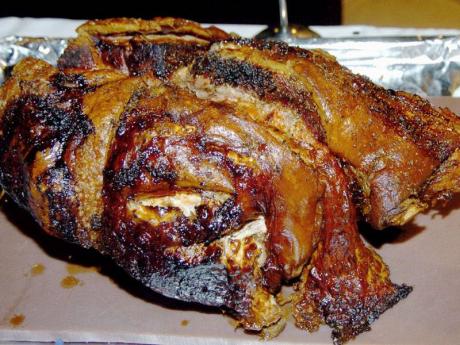Soul-food influences
Heather Little-White, Contributor
Soul food all began when the Spanish and English explorers began arriving in the southern United States - Virginia, North and South Carolina, Georgia, Florida, and the southern islands. Naturally, they travelled with their food, but discovered new foods. Southern cooking was created when European, Africans, Native Americans and emigrants from other countries brought their own practices to the culinary mix.
Slavery and poverty influenced the evolution of Southern cooking, with African slaves cooking for generations and making an early mark. Poverty from the civil war and the great depression, resulted in hunger and their survival depended on the creative talents of gardeners, hunters, fishers and cooks.
Native Indians
Popular ingredients like corn were already around, and it was the Spanish who brought pork to America. The native Indians grew beans, peas, squash, greens, onions, berries, nuts, and various kinds of fruit. Wild game was on the land and the ocean provided seafood. When emigrants arrived, they raised livestock, cabbages, yams, wheat, oats, peanuts, okra, black-eyed peas, potatoes, tomatoes, rice, oranges, melons, chocolate, and tea.
Creole food originated from the first generation New Orleans-born immigrants from France, Spain, and Africa
Jamaican cuisine today is influenced by several cultures, including the cooking styles of Southern America which is now ingrained in our cuisine. You may not even be sure of the origins of what you now consume. A Southern kitchen runs smoothly when the pantry and fridge are stocked with staple ingredients for making soul food meals with ease. Here are some essentials of Southern cooking which are still a part of Jamaica's cuisine.
1. Lard
"Praise the lard, pass the biscuits," as the Southern saying goes. Made from the rendered fat of a pig, it is used in both cooking and baking. With a long shelf life, the richness compared to other fats contributes to fluffier biscuits and flakier pie crusts. To substitute lard for butter in a baking recipe, reduce the amount by one-fourth.
2. Canola Oil
Canola oil should be on hand to cope with the amount of frying in Southern cooking. Canola oil, made from the rapeseed, is better compared to other oils because of its high smoking point.
3. Self-rising flour
Self-rising flour makes a better crust for dishes like peach cobbler to a lighter crust in fried chicken. It is merely all-purpose flour with the addition of salt and baking powder.
4. Mayonnaise
Made from egg yolks, vegetable oil and lemon juice, mayonnaise is the glue that binds many Southern gems together like pimento cheese, egg salad and potato salad among others.
5. Pork
Soul food is not soul food without the flavouring of pork. It may take the form of bacon, and smoked pork belly is popular. The fat rendered from the bacon while cooking is often stored for later use as cooking fat or flavouring. Pig's feet must be slow cooked to a gelatinous state. It may be used to make a broth to cook collard greens or other vegetables.
6. Condensed Milk
Condensed milk is a component of Southern desserts like banana pudding. It is a mixture of whole milk and sugar. Unsweetened condensed milk is also known as evaporated milk and is often used in a creamy macaroni and cheese.
7. Hot-Pepper Sauce
Collard or turnip greens could never be cooked without pickled Tabasco peppers packed in vinegar. The hot sauce should also be dashed onto cornbread.
8. Cajun Seasoning
Cajun seasoning blend is used for blackening rubs or to give a Creole flair to dishes. It is best to make your own to control the spiciness and saltiness.
Make your own Cajun Spice by blending equal parts of chilli powder, oregano, dried thyme, sweet paprika, salt, cayenne powder, garlic powder and onion powder. Store in airtight bottles.
Source: Americanfood.about.com

